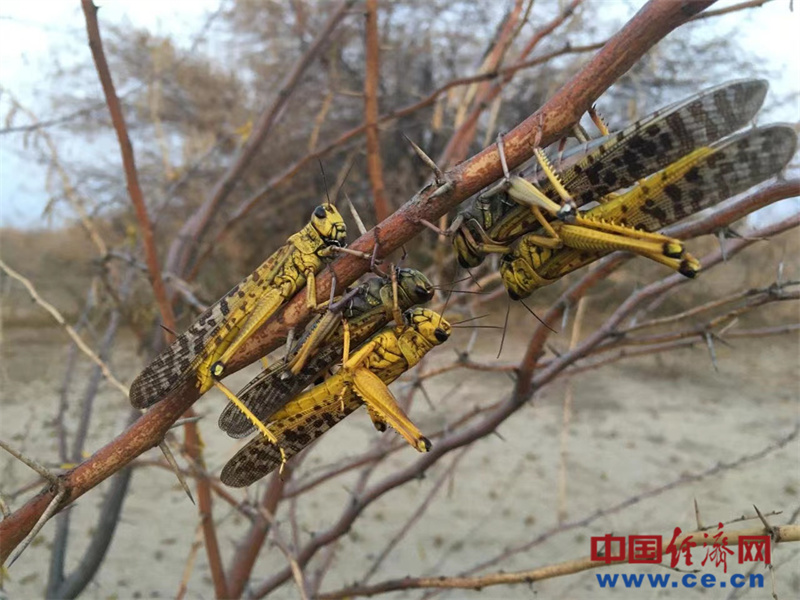BEIJING: “The worst that we have ever seen, ever. I cultivated around 20 hectares of cotton crops and almost all of them have been eaten. It is a loss of around 10 million rupees. It will take years to recover from this loss,” Mir Gul Muhammad, a farmer in Balochistan province, was blunt. “These nasty insects appeared like a dark cloud out of nowhere and ate 80 percent of my crop in a few days.”
In 2020-21, Pakistan experienced its worst locust outbreak in nearly three decades, causing severe crop yield reduction or even total failure in many areas. “According to the Food and Agriculture Organization (FAO), desert locusts affected 38 percent of Pakistan’s land area. The swarms caused significant damage to food crops, including wheat, maize, and vegetables. And the Pakistan Agricultural Research Council showed that the locusts damaged over 3 million hectares of crops, leading to losses of around USD 3 billion,” noted Prof Hidayat ULLAH from the University of Swabi.Luckily, with the joint efforts of experts from both China and Pakistan, the locust plague was finally brought under control. “The intensity has been reduced. Swarms has been restricted to the eastern boarder of Pakistan due to effective aerial spray,” Prof ULLAH said. With the support of the FAO, Chinese Government and other international organizations, various control measures have been implemented to mitigate the impact of the outbreak.
“Nevertheless, we cannot relax our vigilance for even a second.” Researcher Tu Xiongbing from the Institute of Plant Protection, Chinese Academy of Agricultural Sciences (CAAS) told China Economic Net in an exclusive interview. Not long ago, he and Prof Hidayat ULLAH co-published a paper entitled IPM-Biological and integrated management of desert locust.
In the paper, Tu mentioned that spraying chemical pesticides is the most effective way when the disaster-affected area is large. For smaller affected areas or relatively mild plagues, biological control measures can control the density. Preventive measures such as protecting natural enemies are also essential. “China’s history is a history of fighting against locusts. All dynasties have specially established prevention and control institutions and regulations. After almost 60 years of development, China has made important achievements in the field of locust monitoring and control. We’re willing to share all experience and technology with Pakistani counterparts.” According to Prof ULLAH, In February 2020, China donated USD 4.9 million worth of pesticide to Pakistan to help combat the locusts, as well as technical assistance from a team of experts.
It is learned that the key to eliminating locusts in Pakistan is to limit locusts to breeding places, preventing them from farmlands. The microbial control adopted by China, such as fungi and microsporidia that can parasitize locusts to reduce population density, depends on whether the domestic strains can survive in Pakistan. “So far, the results we have achieved are, on the whole, satisfactory.” –Agencies
Home CHINA-CPEC-BRI Pakistan-China desert locust control cooperation protect food security in Pakistan






